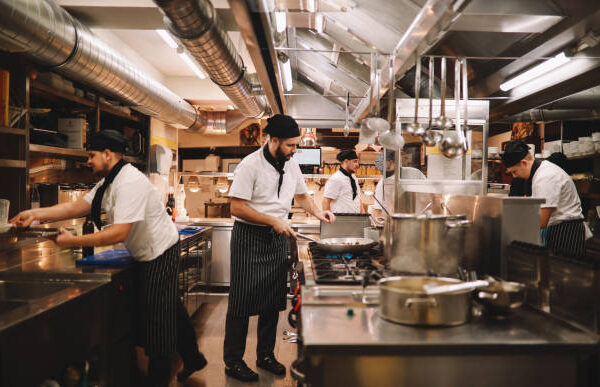A restaurant’s atmosphere, functionality, and overall experience play a major role in its success. Many restaurant owners assume that in order to see significant improvements in customer satisfaction and revenue, they need to undergo an extensive, costly renovation. However, this isn’t always the case. Small, strategic changes can transform a restaurant in ways that lead to increased profits, improved efficiency, and a more enjoyable experience for both guests and staff. Sometimes, the key to doubling profits isn’t tearing everything down and starting over—it’s knowing what small tweaks will make the biggest difference.
Optimizing the Layout for a Better Dining Experience
One of the simplest yet most effective ways to enhance a restaurant is through layout adjustments. The way tables, chairs, and service stations are positioned can directly impact the flow of service and customer comfort. If tables are too close together, guests may feel cramped and uncomfortable, leading to shorter dining times and fewer return visits. On the other hand, an inefficient seating arrangement can limit the number of customers served in peak hours, reducing revenue potential. By strategically reorganizing the layout to create a balance between comfort and efficiency, restaurants can instantly improve both the customer experience and their bottom line. Sometimes, even something as simple as removing an extra row of tables to open up walking space can make guests feel more at ease and create a more inviting atmosphere.
Lighting: A Small Change That Makes a Big Impact
Lighting is another powerful tool that can transform a restaurant without requiring a significant investment. Bright, sterile lighting can make a space feel uninviting, while dim, uneven lighting can make it difficult for guests to read the menu or enjoy their meals. The right balance of warm, well-placed lighting creates a cozy, welcoming environment that encourages customers to relax and stay longer. Many restaurants see an increase in sales simply by adjusting their lighting to match the mood they want to create.
If the goal is a lively, energetic setting, strategically placed pendant lights and accent lighting can enhance the ambiance. For fine dining establishments, soft, warm lighting can make the space feel more intimate and upscale. A relatively small change like switching to dimmable LED bulbs or adding a few statement light fixtures can completely transform the dining experience.
Refreshing Decor and Color to Modernize Your Space
Beyond the lighting, color and decor updates can also have a huge impact. Worn-out walls, outdated furniture, or a color scheme that feels dull or uninspired can make a restaurant seem neglected, even if the food is top-notch. A fresh coat of paint in a modern, inviting color palette can make a space feel brand new without the need for major renovations. Accent walls, artwork, or even updated signage can add personality and style to a restaurant without a hefty price tag.
Customers often associate aesthetics with quality, meaning a well-designed, visually appealing space makes them more likely to return. Investing in new chairs, booths, or even just reupholstering existing seating can give a restaurant an instant facelift while improving comfort for guests.
Menu Design: A Silent Profit Booster
Another often-overlooked area of improvement is menu design. Many restaurants focus entirely on their food and service but neglect the visual appeal and readability of their menus. A well-designed menu isn’t just about aesthetics—it plays a crucial role in guiding customer choices and increasing average ticket size.
If a menu is cluttered, difficult to read, or visually unappealing, customers may rush through their selections or miss key items altogether. Updating the menu with a sleek, modern design and strategically emphasizing high-profit items can lead to immediate revenue growth. Even something as simple as changing the font, adding high-quality images, or reorganizing the layout can make a significant difference.
Table Settings and Presentation: Elevating the Guest Experience
In addition to the menu itself, upgrading table settings and presentation can elevate the dining experience without requiring a full-scale remodel. Small changes, such as swapping out cheap, worn-out plates for stylish new dinnerware or investing in higher-quality glassware and utensils, can make guests feel like they’re dining in a more upscale establishment.
Perceived value matters, and when customers feel they are receiving a premium experience, they are often willing to spend more. Details like linen napkins instead of paper, decorative salt and pepper shakers, or even custom-branded coasters can subtly enhance the overall impression of a restaurant.
Improving Kitchen Efficiency for Faster, Better Service
While front-of-house updates are important, behind-the-scenes improvements can be just as impactful. Kitchen efficiency directly affects service speed and customer satisfaction. If a kitchen is cluttered, poorly organized, or relying on outdated equipment, it can slow down service, increase waste, and create unnecessary stress for staff.
Simple updates, such as reorganizing workstations for better flow, investing in energy-efficient appliances, or upgrading storage solutions, can improve productivity and reduce long-term costs. Restaurants that optimize their kitchen layout often find that they can serve more customers in less time without compromising quality.
Staff Training: A Cost-Effective Upgrade
Service also plays a critical role in customer retention and profitability. Even a beautifully designed restaurant will struggle if service is slow, inconsistent, or unprofessional. Investing in staff training can be one of the most valuable upgrades a restaurant can make.
A well-trained, knowledgeable team can upsell effectively, handle high-pressure situations with ease, and create a more enjoyable experience for guests. Training doesn’t have to be expensive—sometimes, regular team meetings to review best practices, role-playing customer interactions, or simply fostering a positive work environment can make all the difference.
Marketing: Small Efforts with Big Returns
Marketing is another area where small changes can yield significant results. Many restaurants rely solely on word-of-mouth or sporadic social media posts, but a consistent online presence can attract new customers and keep regulars engaged. Updating the restaurant’s website, improving SEO for local searches, or running targeted social media ads can drive traffic without requiring a huge investment.
Something as simple as setting up an online reservation system, launching a loyalty program, or partnering with local influencers can generate excitement and bring in new business. Customers today are looking for restaurants that not only serve great food but also engage with them digitally. A restaurant that is active on social media, responds to reviews, and shares behind-the-scenes content creates a sense of connection that encourages repeat visits.
Seasonal Updates to Keep Things Fresh
Seasonal updates are another effective way to keep a restaurant feeling fresh and exciting without major renovations. Customers love variety, and small seasonal menu changes, themed decor updates, or limited-time promotions can create buzz and keep regulars coming back.
Whether it’s a summer patio refresh, festive holiday decor, or a new fall-inspired cocktail menu, small seasonal touches make a big impact. Even something as simple as offering outdoor seating in the warmer months or adding heaters for the winter can enhance the customer experience.
Small Changes, Big Results
At the end of the day, restaurant success isn’t just about the food—it’s about creating an experience that customers want to return to again and again. While a full-scale renovation can be beneficial in some cases, it isn’t always necessary.
Small, thoughtful updates can completely transform a restaurant’s look, feel, and efficiency without the need for a massive budget. Whether it’s improving lighting, updating decor, refining the menu, optimizing kitchen operations, or enhancing service, every small change adds up. A restaurant that continuously evolves and refines its space and operations will not only attract more customers but also see long-term growth in revenue and reputation.



